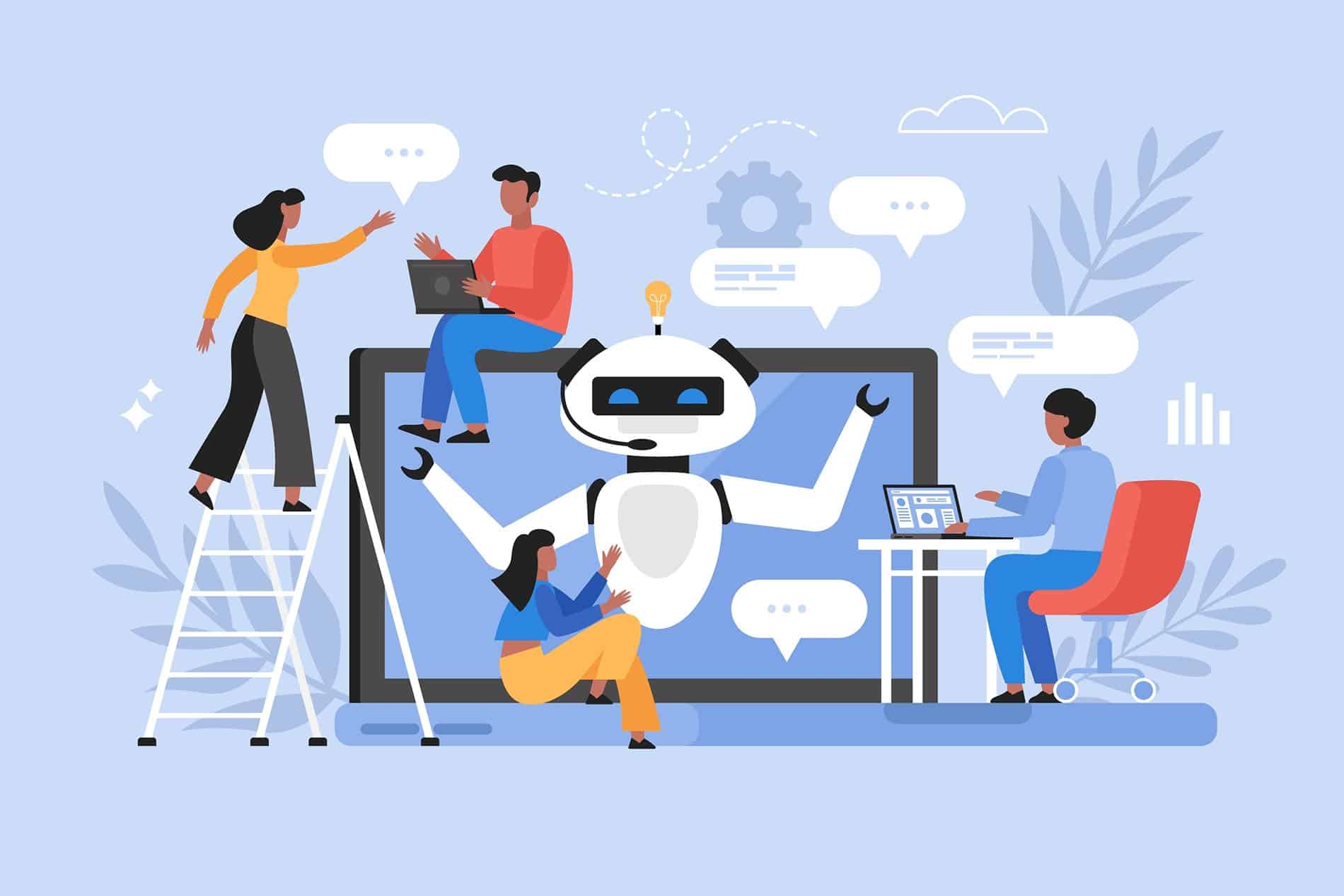Imagine a world where your customers or employees can find solutions to their problems swiftly, without having to wait in a long queue on a call or for an email response. That’s the power of self-service portals – an essential tool in today’s digital-first business landscape.
But do you know what can make a self-service portal even better? Conversational AI chatbots.
The Power of Self-Service Portals
Self-service portals are online sites that enable customers or employees to solve their own issues independently, without the need for human intervention.
From accessing account information to resolving common queries, these portals empower customers and employees, making them feel valued and in control.
As businesses, offering self-service portals means reducing support costs, improving service delivery speed and enhancing overall customer satisfaction.
With a proper self-service portal in place, people can solve their own problems – meaning your overwhelmed IT help desk can catch a break.
In a situation where a customer uses an easy-to-use self-service portal, the time spent resolving their issue will be less than if they put in a ticket to have an IT employee help them. However, if the portal is confusing and difficult to use, getting human intervention will be seen as the faster way to fix the problem.
A great way to encourage self-service portal adoption is to implement conversational AI as part of your self-service strategy. Conversational AI chatbots have the potential to revolutionize the way IT support is delivered by automating routine tasks and providing instant assistance to users.
Introducing Conversational AI Chatbots
Conversational AI chatbots are intelligent software applications that can understand and respond to user queries in natural language. Their primary role in IT Service Management is to provide quick, efficient support to end-users by resolving common issues, answering questions and guiding users through various processes. By incorporating conversational AI chatbots into your self-service portal, you can significantly enhance the overall user experience and streamline your IT support operations. You can also deflect tickets, requests and calls/emails from your IT help desk.
It is important to note the distinction between conversational AI chatbots and traditional chatbots.
When talking about traditional chat, we mean a chatbot experience that has a limited conversation path. It can take inputs and guided dialog paths to return answers in a simplified question/answer format – similar to what you’d get if you searched a knowledge base or FAQ – there aren’t many actions a user can take from the conversation with a traditional chatbot.
Traditional chatbots don’t fare as well as those built on conversational AI. In fact, a recent market study from CIO.com found that nearly 76 percent of chatbot customers report user frustration with existing solutions. However, When conversational AI is used, the study shows more than 61 percent of respondents could effectively resolve problems vs just 35 percent when traditional chat is used.
But how does the addition of a conversational AI chatbot further enhance a self-service portal? Here are five key benefits:
- 24/7 Instant Support: Unlike human agents, chatbots are available round the clock, ready to assist customers instantly, anytime, anywhere. This constant availability reduces customer waiting time and boosts customer satisfaction.
- Cost Savings: Implementing a chatbot can significantly reduce operational costs. By handling routine queries and tasks, chatbots free up your IT service desk employees to focus on complex issues, leading to increased efficiency and cost savings. In addition, this can help improve your IT employees’ morale.
- Increased Customer Satisfaction: With their ability to provide instant, personalized responses, chatbots can significantly improve the customer experience, leading to higher satisfaction levels and stronger customer loyalty.
- Scalability: Chatbots can simultaneously handle multiple conversations, allowing businesses to scale their customer service efforts without additional manpower.
- Data Collection and Insights: Chatbots collect valuable customer data during interactions, providing businesses with insights that can be used to improve products, services, IT processes and customer engagement strategies.
At Shaner Hotel Group self-service is key to success. Using TeamDynamix for IT Service Management (ITSM), the company has been able to simplify the intake process for IT support tickets with the use of a self-service portal.
Because the portal is web-based, employees can initiate service requests from their phone or another mobile device. That’s an important benefit for an organization where many employees aren’t sitting at a desk all day. “With limited help desk employees, we’re trying to cut down on the number of phone calls we get requesting support,” Steve Shala, Vice President and Chief Information Officer, said. “We’re trying to push everybody online instead.”
When service requests come in through the online portal, they’re routed automatically to the appropriate team member for a response. Because help desk staff are answering fewer phone calls, they can respond to service requests faster and more effectively as they come in through the portal.
“Creating an employee self-service portal was a pivotal step in streamlining IT service for the city,” said City of Buffalo System Support Analyst Nathan Ignatz.
Powered by TeamDynamix, the portal allows city employees to find answers to their IT questions online. This provides instant gratification for employees and eliminates the need for further assistance in many cases.
If employees can’t resolve their own IT issues, they can submit a service request through the portal by choosing from an online service catalog. Their request is then routed automatically to an appropriate IT staff member for a response, based on the nature of the problem or request.
Aided by the dynamic workflows built into the TeamDynamix platform, a small team of IT staff members create and maintain knowledge base articles for the city, ensuring that this information always remains relevant and up to date.
“Before the service portal existed, employees would call or email the help desk to ask questions or request service,” Ignatz said. This tied up IT staff time in fielding questions, creating service tickets, and getting them into the hands of the correct team members. Having employees enter service requests directly through the portal ensures a faster resolution to their issue and frees up IT staff to work on other tasks instead.
“It allows us to provide service quicker,” Ignatz observes.
The integration of conversational AI chatbots into self-service portals offers numerous benefits. They not only enhance customer service delivery but also contribute to cost savings, scalability and valuable customer insights.
If you’re seeking to elevate your customer experience, it’s time to consider implementing conversational AI chatbots on your self-service portal. To learn more about traditional chat vs. conversational AI read our recent market study: State of Chatbots and Conversational AI.

